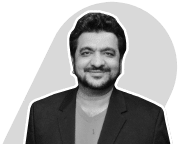Increase productivity instantly
Are you tired of spending hours transcribing meetings, lectures, or interviews? Do you wish there was a way to turn your spoken words into text quickly and accurately? Well, thanks to the wonders of artificial intelligence, that wish can now become a reality!
In this blog, we’ll explore the exciting world of AI-powered speech-to-text conversion and how it can help you maximize productivity in your personal and professional life. We’ll cover everything from the basics of how it works to real-life examples of how it’s being used to save time and streamline tasks.
But first, let’s start with a little bit of history.
The History of audio-to-text converter
The concept of converting speech to text dates back to the 1930s, when a team of researchers at Bell Labs developed the first practical speech recognition system. However, it wasn’t until the late 20th century that the technology really started to take off.
One of the early pioneers in the field was a company called Dragon Systems, which developed a software called Dragon NaturallySpeaking in the 1990s. This program allowed users to dictate text into a computer using a microphone, making it easier to input large amounts of data without having to type it manually.
As technology has advanced, so has the accuracy and speed of AI powered speech-to-text conversion. Today, AI-powered systems are able to transcribe spoken words with near-human levels of accuracy, making it a valuable tool for a wide range of applications.
How Does the audio-to-text converter Work?
At its core, audio-to-text converter works by taking the spoken word and turning it into a digital representation of that sound. This is done using a process called “speech recognition,” which involves a computer analysing the sound waves of a spoken language and matching them to a set of pre-defined sounds, or “phonemes.”
To make this process more accurate, AI-powered speech-to-text systems use machine learning algorithms to “learn” from a large dataset of transcribed speech. This allows them to recognize patterns in the way words are pronounced and improve their accuracy over time.
One of the key advantages of using AI for speech-to-text conversion is that it can adapt to different accents and languages, making it more versatile than traditional systems. In addition, AI-powered systems are generally faster and more accurate than their non-AI counterparts, which can save time and reduce errors.
The Benefits of Using AI-Powered audio-to-text converter
Now that you have a basic understanding of how audio-to-text converter works, let’s dive into some of the ways it can help you maximize productivity in your personal and professional life.
Save Time: One of the most obvious benefits of using audio-to-text converter is that it can save you a lot of time. Instead of manually transcribing audio or video recordings, you can simply run the file through a speech-to-text program and let the AI do the work for you. This can be especially useful for tasks that involve transcribing large amounts of data, such as transcribing interviews or lectures.
Improve Accuracy: As mentioned earlier, AI-powered speech-to-text systems are generally more accurate than their non-AI counterparts. This means you can expect fewer errors and typos when using an AI-powered system, which can save you time and reduce the risk of mistakes.
Increase Efficiency: In addition to saving time and improving accuracy, speech-to-text conversion can also help you work more efficiently by allowing you to multitask while transcribing audio or video. For example, you can listen to a recording on your phone while walking to work, and the AI will transcribe it for you in real-time. This means you don’t have to stop what you’re doing to type out the transcript manually, which can help you get more done in less time.
Enhance Collaboration: Audio-to-text converter can also make it easier for teams to collaborate on projects. For example, if you’re working on a podcast or webinar, you can use speech-to-text conversion to quickly transcribe audio recordings and share them with your team. This can help everyone stay on the same page and ensure that no important details are missed.
Make Data More Accessible: Finally, audio-to-text converter can help make data more accessible to people who may not be able to listen to audio or video recordings. This can include people with hearing impairments, as well as those who don’t speak the same language as the speaker. By transcribing audio and video into text, you can make the data more widely available and ensure that it’s accessible to everyone.
Real-Life Examples of audio-to-text converter
Now that we’ve covered the basics of how audio-to-text converter works and the benefits it can provide, let’s look at some real-life examples of how it’s being used.
1. Business Meetings: Many businesses are using audio-to-text converter to transcribe meetings and save time. For example, a company might use a speech-to-text program to transcribe a conference call or a meeting with clients. This can help the company keep track of important details and ensure that everyone is on the same page.
2. Legal Depositions: Speech-to-text conversion can also be used in legal settings, such as during depositions. By transcribing the spoken testimony of witnesses, lawyers can save time and ensure that they have a written record of what was said.
4. Podcasting: Another area where audio-to-text converter is gaining traction is in the world of podcasting. Many podcasters are using speech-to-text programs to transcribe their episodes and make them more accessible to listeners. This can be especially helpful for listeners who are deaf or hard of hearing, as well as those who prefer to read rather than listen to audio.
5.Customer Service: Finally, some companies are using audio-to-text converter in their customer service departments. For example, a company might use a speech-to-text program to transcribe phone calls with customers and use the transcriptions to identify patterns or trends in customer feedback. This can help the company improve its products and services and provide better support to its customers.
Conclusion:
As you can see, audio-to-text converter has the potential to revolutionize the way we work and communicate. Whether you’re a business owner, educator, podcaster, or simply someone who wants to save time, speech-to-text conversion can help you maximize productivity and streamline your tasks.
So, the next time you have a meeting, lecture, or interview to transcribe, consider using an AI -powered speech-to-text program. Not only will it save you time and improve accuracy, but it can also enhance collaboration and make data more accessible to a wider audience.
Of course, it’s important to keep in mind that no tool is a perfect technology, and there may be times when it makes mistakes or struggles to transcribe certain words or accents. However, as the technology continues to improve, it’s likely that these issues will become less and less common.
In conclusion, if you’re looking for a way to boost your productivity and streamline your tasks, give audio-to-text converter a try. It may just be the solution you’ve been looking for.





















